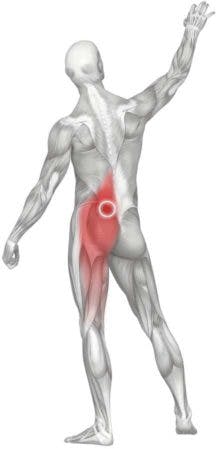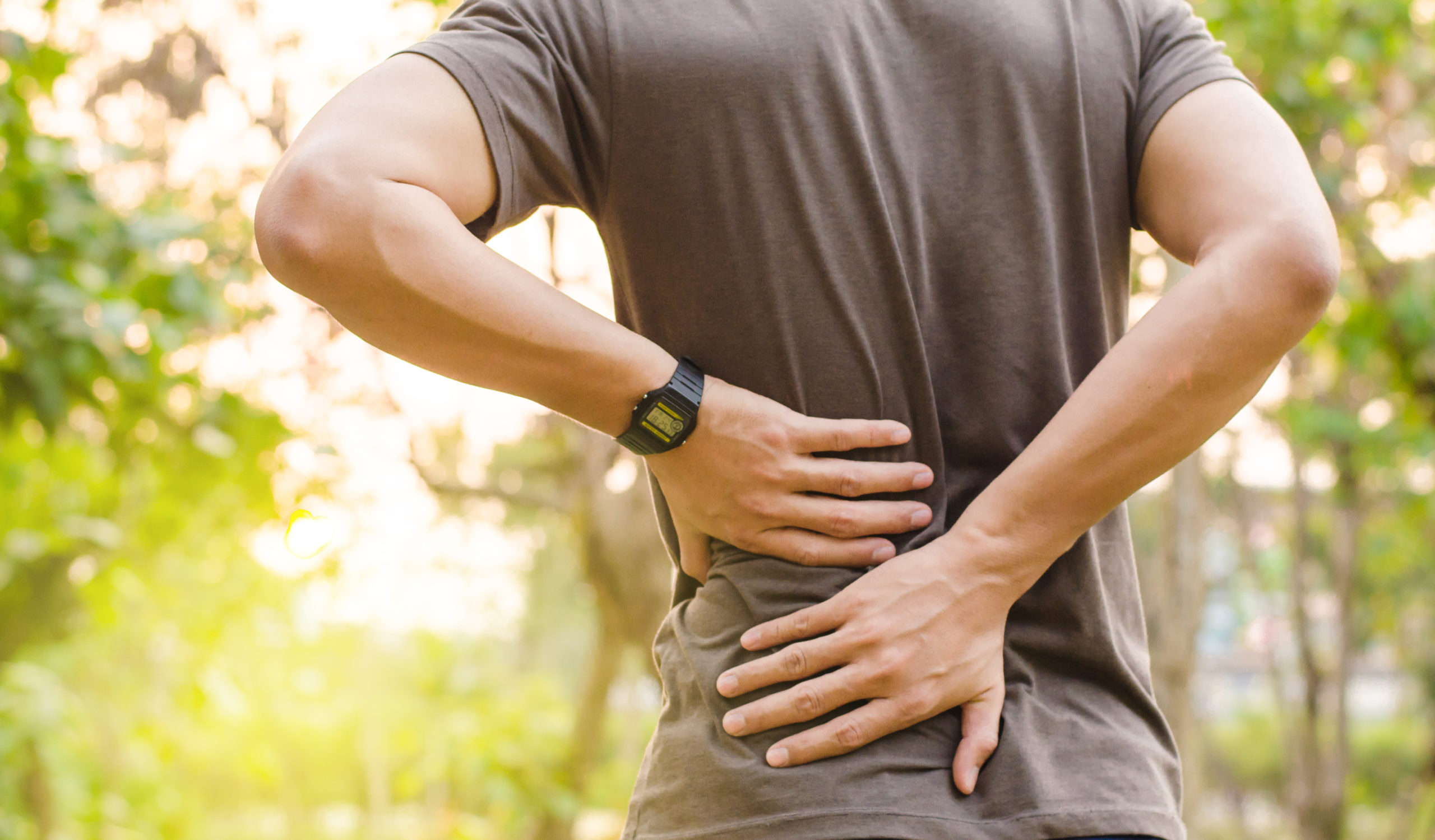Have you tried all types of low back exercises for your lingering back pain? You might want to have your physical therapist take a look at your hips. Hip weakness is a common cause of back pain.
Your hips and lower back are closely linked through multiple shared muscles. Therefore, motion at the spine, pelvis, and hips occur together. Poor movement in one of these areas creates compensations in the others. This is because of the common muscle attachments.
Often, rehabilitation exercises targeting your abdominal and lower back muscles result in only partial relief of back pain. The missing piece may be addressing the weakness of your hip muscles.
Proof There is a Link between Hip Weakness and Back Pain
Weakness or poor endurance of the glutes is associated with back pain in athletes and non-athletes. Women with persistent back pain have smaller glute muscles compared to those without back pain. Female athletes with back pain show side-to-side differences in hip strength. This predisposes them to poor movement patterns and injury.
Chronic back pain in men is associated with weakness of the glutes, elevated body weight, and tenderness in the lower back. Weakness of the glute muscles is often present in people who are limited in their ability to stand because of low back pain.
It is unclear if hip muscle weakness is the result of disuse or a cause of low back pain. In either case, exercise targeting your hips is required to restore strength and proper movement. Many people with weakness in their hip muscles overuse their lower back muscles. Overactive low back muscles lead to fatigue, pain, and poor movement. This results in a vicious cycle where poor movement results in more pain, and more pain worsens your movements.

A 2015 study in the Journal of Physical Therapy Science compared the effectiveness of low back and hip strengthening exercise to low back exercise only. People who exercised both the lower back and hip showed significantly greater improvements in back strength, balance, disability, and pain. Another study in the Journal of Back and Musculoskeletal Rehabilitation showed better outcomes in people who did exercises for both the lower back and hip muscles. The following 5 exercises were included in the study.
Clamshell
The clamshell strengthens your gluteus medius. Begin lying on your side with your hips bent. Bend your knees and keep your feet together. A resistance band can be placed around your thighs just above your knees. Start by rotating your top hip to bring your knees apart. Hold this position for 2 seconds and then return to the starting position slowly.
Remain completely on your side with one hip stacked on top of the other. Allowing your pelvis to roll back is the most common mistake. The clamshell is a great exercise to start with because it requires the least activity of your lower back muscles.
Side-Lying Hip Abduction
Hip abduction strengthens both your gluteus medius and maximus. Begin by lying on one side with your bottom hip and knee bent. Keep your knee straight. Point your toes forward to orient your hip in slight internal rotation. This increases gluteus medius activity.
Initiate the movement by lifting your top leg about 30 degrees. Hold this position for a count of 2 seconds and then slowly lower your leg to the start position. Ankle weights can be added for resistance once 15 proper repetitions are performed.
This exercise activates the gluteus medius to a greater level than the clamshell. However, it is also more challenging to perform correctly. Similar to the clamshell, it is important to remain completely on your side with one hip stacked on top of the other. Allowing the pelvis to roll backward during the movement is the most common mistake. Also, as the muscle tires, your leg will drift forward into hip flexion. It is important to maintain your leg lined up or slightly behind your trunk and upper body.
Quadruped Hip Extension + Knee Flexion
Begin on your hands and knees. Position your shoulder directly over your hands. Position your hips directly over your knees. Maintain a neutral spine position. Initiate the movement by bending one knee to 90 degrees. Next, lift your heel up towards the ceiling keeping your knee bent. Hold this position for 2 seconds then return to the starting position. Lower your leg back down before repeating another repetition on the same side. Avoid arching your lower back. Complete 10 to 15 repetitions on one side before beginning with the other leg.
Cook Hip Lift
Begin lying on your back with your hips bent and feet lined up with your shoulders. Flex your hip by holding one knee to your chest. It is helpful to place a small towel roll or ball in the crease of your hip. Lift your toes off the floor and perform a bridge from one leg. Avoid excessively arching your low back.
Be sure to achieve the bridge position by extending through your hips. Hold this position for 2 seconds then return to the starting position. Lower the body back down before repeating another repetition on the same side. Complete 10 to 15 repetitions on one side before beginning with your other leg.
The position of your hips during this exercise facilitates a neutral pelvis and low back position. This is helpful for people with low back pain. However, this also increases the challenge to your glute muscles compared to a standard bridge. Raising your toes makes you press your heel into the ground as you lift your hips. This activates your glutes and hamstrings.
Lateral Step-Down
The step-down exercise begins with your hands on both hips standing with one leg. Stand on the side of a step or 8-inch high box. Maintain balance on 1 leg and slowly squat to lower your heel of the other leg toward the floor. Gently tap your heel and return to the starting position.
Maintain your trunk in an upright position. Avoid leaning to the side or waving your arms. Your knee should not move forward past your toes. Also, your knee should remain over your toes so it does not cave inwards. Perform 8 to 10 slow and controlled repetitions before switching sides to your other leg.
Improve Hip Strength to Decrease Your Back Pain
It is important to exercise your abdominal, lower back, and hip muscles to fully recover from an episode of low back pain. These muscles do not function in isolation. Not addressing muscle imbalances often leads to recurrent episodes of pain. These 5 exercises address common hip muscle imbalances in people with low back pain.
Exercises should be individually prescribed based on your physical therapist’s examination of your movement and strength. Additional individualized exercises integrating multiple muscles with functional movement patterns are often beneficial to help you achieve your goals.
Contact us to schedule an appointment if you would like help getting started. The physical therapists at BSR have been helping people in Southern Ocean County move without pain since 2007.


